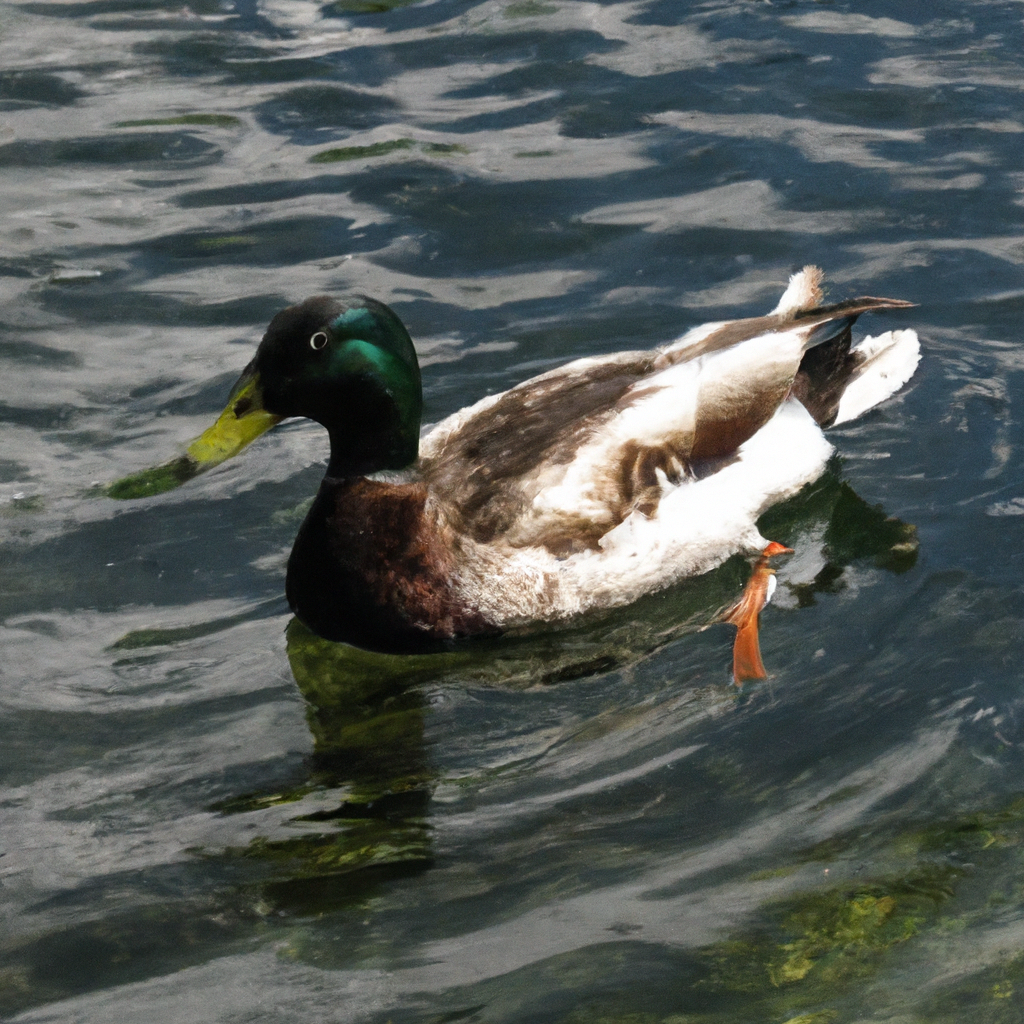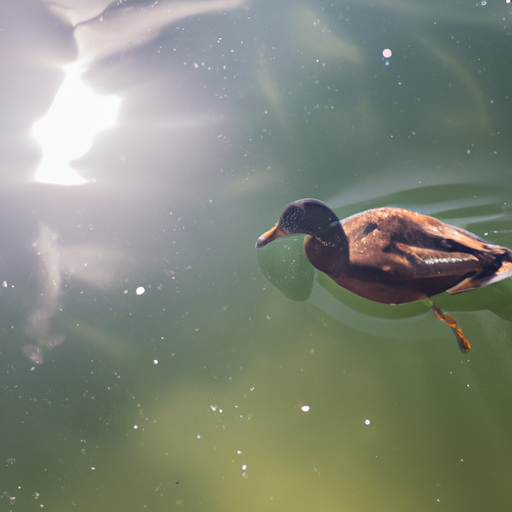Have you ever wondered about the surprising capabilities of ducks when it comes to exploring underwater? It’s fascinating to discover that these feathered creatures can hold their breath and gracefully glide beneath the surface for much more extended periods than we might expect. Exploring the depths of ponds and lakes, ducks are able to submerge themselves for several minutes, hunting for food and navigating their aquatic habitat. Join us as we dive into the incredible underwater world of ducks and uncover just how long they can stay beneath the surface.
Habitat and Behaviors of Ducks
Ducks are fascinating creatures known for their affinity for water. As water birds, they predominantly inhabit wetland areas such as lakes, rivers, ponds, and marshes. Their ability to swim and dive in water is a significant part of their behavior and survival mechanisms.
1.1 Ducks as Water Birds
Ducks have evolved to be highly adapted to aquatic life. Unlike many other bird species, they spend a significant amount of their time in and around water. Their webbed feet enable them to paddle through the water with ease, while their waterproof feathers protect them from getting soaked.
1.2 Adaptations for Aquatic Life
To thrive in their watery habitats, ducks possess several adaptations that enhance their ability to live in the water. One such adaptation is their broad bill, which aids in catching food from underwater or the surface efficiently. Their legs are positioned at the rear of their bodies, which helps with propulsion while swimming.
1.3 Diving Ability of Ducks
Ducks impressively have the ability to dive underwater, providing them with access to different food sources. They are capable of submerging their bodies entirely, occasionally staying underwater for considerable periods. Understanding the factors that influence their underwater stay is essential to appreciate the extent of their diving abilities.
Physical Abilities of Ducks
In addition to their ability to swim, ducks possess impressive physical abilities that contribute to their survival and mobility.
2.1 Underwater Swimming
Ducks display remarkable underwater swimming skills. They use their wings to provide propulsion and navigate underwater, similar to the way they swim on the surface. This technique allows them to move smoothly through the water, enabling them to catch prey and explore their environments effectively.
2.2 Wing Structure and Function
The wings of ducks are not only used for flight but also play a crucial role in their swimming capabilities. The structure of their wings enables them to generate significant power and control their movements underwater. This feature gives ducks an advantage when maneuvering through aquatic environments.
2.3 Waterproof Feathers
One of the most remarkable aspects of ducks’ physical abilities is their waterproof feathers. These feathers are specially designed to repel water, preventing their bodies from becoming waterlogged and keeping them warm and buoyant. By maintaining their feathers’ integrity, ducks ensure their ability to navigate both above and below the water’s surface.
This image is property of images.unsplash.com.
Factors Affecting Duration of Underwater Stay
While ducks have impressive diving abilities, various factors influence their capacity to remain submerged before resurfacing.
3.1 Species of Ducks
Different duck species have varying adaptations and behaviors, which affect their ability to stay underwater. Some species, such as diving ducks, are specialized in diving for prey and can stay submerged for more extended periods compared to dabbling ducks, which primarily feed on the water’s surface.
3.2 Individual Variation
Even within the same species, individual ducks may exhibit variations in their diving capabilities. Factors like age, size, and physical condition can influence the duration a duck can spend underwater. Younger and healthier ducks tend to have more energy reserves and can typically stay submerged for longer.
3.3 Environmental Factors
The environmental conditions also play a role in determining how long ducks can stay underwater. The presence of abundant food sources and clear water visibility can encourage ducks to dive for more extended periods. Conversely, competition for limited resources or turbid water may restrict their underwater stay.
3.4 Prey Availability
The accessibility and availability of prey play a vital role in a duck’s decision to dive and the duration of their stay underwater. If ducks encounter high concentrations of desirable food items, they may prolong their dives to take advantage of these feeding opportunities. On the other hand, scarce or elusive prey may limit their underwater presence.
Duck Diving Techniques
Ducks employ various diving techniques depending on their species and preferred feeding habits.
4.1 Dabbling Ducks
Dabbling ducks, such as mallards, are known for their ability to feed on the water’s surface. Rather than fully submerging themselves, they primarily tip their bodies into the water, allowing easy access to vegetation or invertebrates. Their short dives are often supplemented by upending themselves to reach food beneath the surface briefly.
4.2 Diving Ducks
Diving ducks, as the name suggests, are more specialized in diving for prey. Species like mergansers and pochards are equipped with adaptations that allow them to dive deeper and remain underwater for longer periods. Their moderate to deep dives enable them to catch fish, crustaceans, and mollusks that dwell at greater depths.
4.3 Diving Depths
The depth to which ducks can dive largely depends on their species and adaptations. While dabbling ducks typically stay close to the water’s surface, diving ducks are capable of reaching depths of several meters. Mergansers, for instance, can dive up to 60 feet (18 meters) to pursue their prey, highlighting their impressive diving capabilities.
Duck Metabolic Adaptations
To support their diving abilities, ducks have developed specific metabolic adaptations.
5.1 Oxygen Storage Capacity
Ducks possess a larger oxygen storage capacity compared to non-diving birds. Their lungs and blood have evolved to enable efficient oxygen uptake and utilization during dives. By incorporating more complex respiratory systems, ducks can extract more oxygen from the air and optimize its utilization in their muscles and organs.
5.2 Heart Rate and Metabolic Rate
During dives, ducks exhibit a remarkable ability to reduce their heart rate significantly. By slowing their heart rate and conserving energy, they can extend their dives and optimize their oxygen consumption. Their metabolic rate also decreases during dives, allowing them to sustain their energy levels for more extended periods underwater.
5.3 Blood Adaptations
The blood of diving ducks has unique physiological adaptations that enhance their ability to store and transport oxygen efficiently. These adaptations include a higher concentration of oxygen-binding proteins in their blood, such as myoglobin. These proteins ensure a steady supply of oxygen to the muscles during prolonged dives, enabling ducks to stay submerged for longer.
Typical Duration Ducks Can Stay Underwater
The exact duration ducks can stay underwater varies between species and individuals. Here are some typical examples:
6.1 Mallards
Mallards, known for their dabbling behavior, typically spend shorter periods underwater compared to diving ducks. Their dives typically last a few seconds to a minute, allowing them to feed on submerged vegetation or invertebrates.
6.2 Mergansers
Mergansers, specialized diving ducks, have impressive underwater endurance. They can remain submerged for up to several minutes, diving to significant depths to pursue fish and other aquatic prey.
6.3 Teals
Teals, another type of dabbling ducks, tend to stay submerged for relatively short durations. Their dives generally last around 15-30 seconds, during which they feed primarily on plants growing near the water’s surface.
6.4 Pochards
Pochards, known for their diving habits, can stay underwater for a significant amount of time. Their dives can last up to several minutes, allowing them to search for prey at greater depths.
This image is property of images.unsplash.com.
Unusual Cases of Extended Underwater Stay
While most ducks adhere to their typical diving durations, some species have been documented displaying remarkable extended underwater stays.
7.1 The Muscovy Duck
The Muscovy duck, a large tropical duck, is known to possess exceptional diving capabilities. They have been observed staying underwater for up to five minutes, surpassing the norms for other duck species. This remarkable feat has enabled them to exploit a wider range of food sources.
7.2 The Spectacled Eider
The Spectacled Eider, a unique diving duck native to the Arctic, exhibits impressive underwater prowess. With the ability to stay submerged for over four minutes, they dive to significant depths in search of their preferred prey, which includes crustaceans, mollusks, and fish.
Potential Dangers for Ducks Underwater
While ducks have evolved impressive adaptations for diving, they are not without risks when submerged.
8.1 Predators
Underwater, ducks can fall victim to predators such as large fish, snapping turtles, and water snakes. These predators take advantage of their presence in the water and ambush them during dives. Ducks need to balance their need for food with the risks of encountering predators.
8.2 Entanglement Risks
In areas with human activity, ducks may encounter entanglement risks underwater. Fishing lines, nets, or pollutants can pose a threat to their safety, leading to entanglement or injury. Conservation efforts should focus on minimizing these potential hazards to protect duck populations.
8.3 Oxygen Depletion
Prolonged stays underwater may cause oxygen depletion, especially in stagnant or polluted water bodies. Ducks must manage their diving durations to ensure they have enough oxygen to sustain their metabolic needs and avoid oxygen deprivation.
8.4 Cold Water Exposure
Ducks that reside in colder regions face the risk of hypothermia when submerged for extended periods. While their feathers provide insulation, remaining underwater in freezing temperatures for too long can compromise their ability to maintain body heat effectively.

Conservation and Management Considerations
Recognizing the importance of wetlands and preserving suitable habitats is crucial for duck populations and their overall well-being.
9.1 Importance of Wetland Preservation
Wetlands serve as critical habitats for ducks, providing them with food, shelter, and breeding grounds. Conserving these ecosystems ensures the long-term survival of duck species and maintains the delicate balance of biodiversity in wetland environments.
9.2 Creating Suitable Habitats
Efforts should be made to create and restore suitable habitats for ducks, taking into account their unique requirements. This includes maintaining appropriate water levels, providing vegetation for cover and nesting, and minimizing disturbances that could disrupt their natural behaviors.
9.3 Educating the Public
Educating the public about the importance of ducks, wetlands, and their underwater behaviors is vital for fostering a conservation-minded mindset. Highlighting the threats ducks face and the actions individuals can take to protect them encourages people to become actively involved in conservation efforts.
Conclusion
Ducks’ ability to stay underwater is a marvelous evolutionary adaptation that allows them to explore, forage, and survive in aquatic environments. Their physical abilities, metabolic adaptations, and diving techniques all contribute to their impressive underwater prowess. Understanding the factors that influence their underwater stay, the potential dangers they face, and the importance of conservation efforts is crucial for safeguarding these charismatic waterbirds and the ecosystems they call home.



